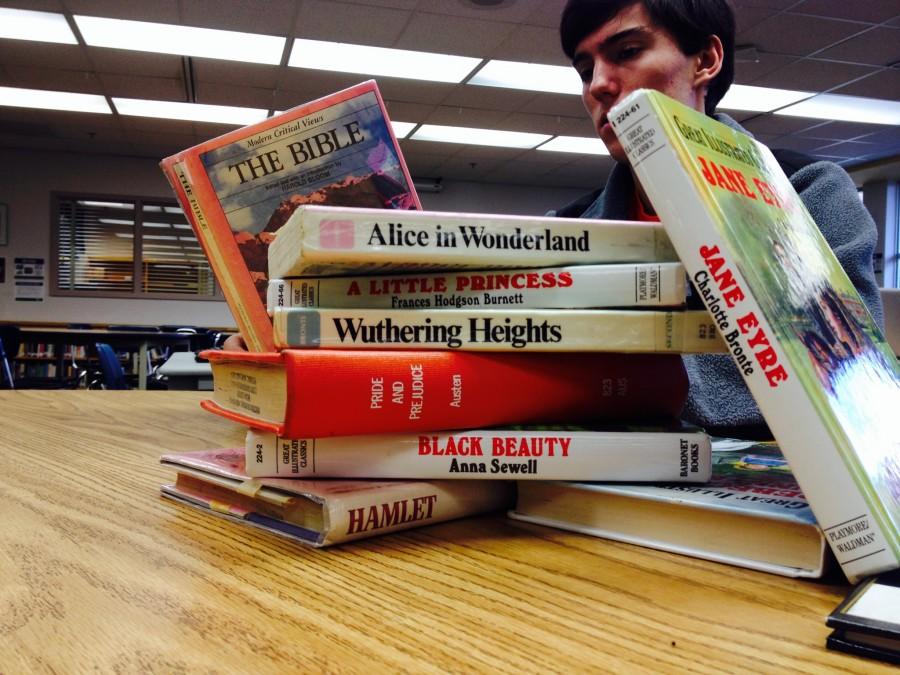Understanding the Bible is necessary for English classes
November 20, 2014
When I first heard about the use of biblical allusions in AP Literature, I was incensed. I would need to read the Bible to pass? I’m not Christian, so why should I have to? Why should anyone have to?
Students are frustrated. In English classes everywhere, they’re being asked to pick out words like “lamb,” “snake” and “apple” from a vast network of words and somehow come up with a well-developed and correct analysis.
Whether or not a student has read the Bible, he or she is expected to identify and analyze biblical allusions. Many are upset—they’ve never read the Bible, so is it reasonable or fair to ask them to suddenly start reading deeply into its messages?
How was it fair that I stood at a disadvantage in my English class simply because I didn’t read the Bible often? How was it okay that I would be pushed to read a book that wasn’t central to my faith in order to do well in a class? How was it fair that anyone who wasn’t Christian was placed in the same situation?
But let’s stop and take a deep breath. Students must realize that understanding the Bible is essential to understanding literature rather than an infringement upon their time and beliefs.
AP Literature teachers aren’t out to disrupt our lives or force us to read the Bible just for the sake of getting students to do it. There’s a bigger picture. The Bible increased in popularity during the 14th and 15th centuries in Europe, and therefore was a major source of inspiration at the time literary classics were being written.
According to AP Literature teacher and team leader Eleanor Goodwin, most authors use the Bible to bring up basic ways of looking at life.
Students are taught that the Bible is “a good book”, not “the good book.” But sometimes we forget what that means.
The Supreme Court case Abington vs. Schemp states that the “Bible is worthy of study for its literary qualities… such study of the Bible or of religion, when presented objectively as a part of a secular (public school) program of education, may not be effected consistently with the First Amendment.”
This means that with the way CHS teachers are incorporating the Bible, no students’ rights are being violated, even if some are irritated that they have to delve into what’s largely considered a holy book rather than a classic read.
But understanding the Bible is an absolutely necessary part of understanding Western literature, so even though it may seem painful, acquiring those biblical-allusion-spotting skills will help students throughout their lives.
According to Principal Joan Benz, the ability to evaluate biblical allusions helped her as both an English and math major. She believes that if students look at allusions in a guided setting, they’re more likely to be able to analyze them in the future.
Unfortunately, this doesn’t help to alleviate the frustration students are feeling now. Students still feel aggravated by the fact that they struggle to find allusions and analysis when some classmates have had a Christian upbringing or years of religious education—virtually a training ground for AP Literature.
According to Goodwin, sometimes it’s actually harder for students who have grown up knowing the Bible when they must analyze it in a literary setting rather than a religious context.
This puts everyone on a level playing field. AP Literature isn’t an easy course, so no matter what background a student has, it’s tough to work through the wording and develop a response.
Additionally, students aren’t being pushed into actually reading the Bible at any point in time. Up until two years ago, certain books and chapters from the Bible were on the summer reading list, but they’ve since been taken off.
According to Goodwin, she removed the Bible readings from the summer reading list because she felt that the teachers could explain them well enough in class.
She also believes that students have a better chance of understanding the different sections if students and teachers discuss biblical material in class rather than leaving students to try and work out what it means on their own.
The real reason for the use of the Bible is simply because people used it to write classics. If they hadn’t, then the Bible wouldn’t be in our curriculum. Since they did, we have to know the Bible to know what on Earth they actually mean when they write about the “lovely little lamb of a girl.”
Even though realizing why students do have to learn about the Bible is great, it doesn’t help for their next free response.
According to Goodwin, the best way for students to understand the most popular stories in the Bible is by reading children’s picture books. She believes that it’s the easiest and best way to understand basic stories.
As students understand more, they can graduate to bigger and better picture books. You’re never too old to read a picture book.
And if it’s any consolation, according to the College Board, none of the scoring guidelines for the AP Literature exam in the past five years have required students to specifically refer to the Bible or any biblical allusions in their answers in order to ace the free responses on the test.
So there we go. Don’t worry about it too much and read those picture books. Don’t be offended, because the AP Literature creators aren’t out to get you… Western classic literature authors are. Just kidding!
Good luck AP Literature students… now all you’ve got to worry about is what Hamlet may or may not be saying about nothing.


